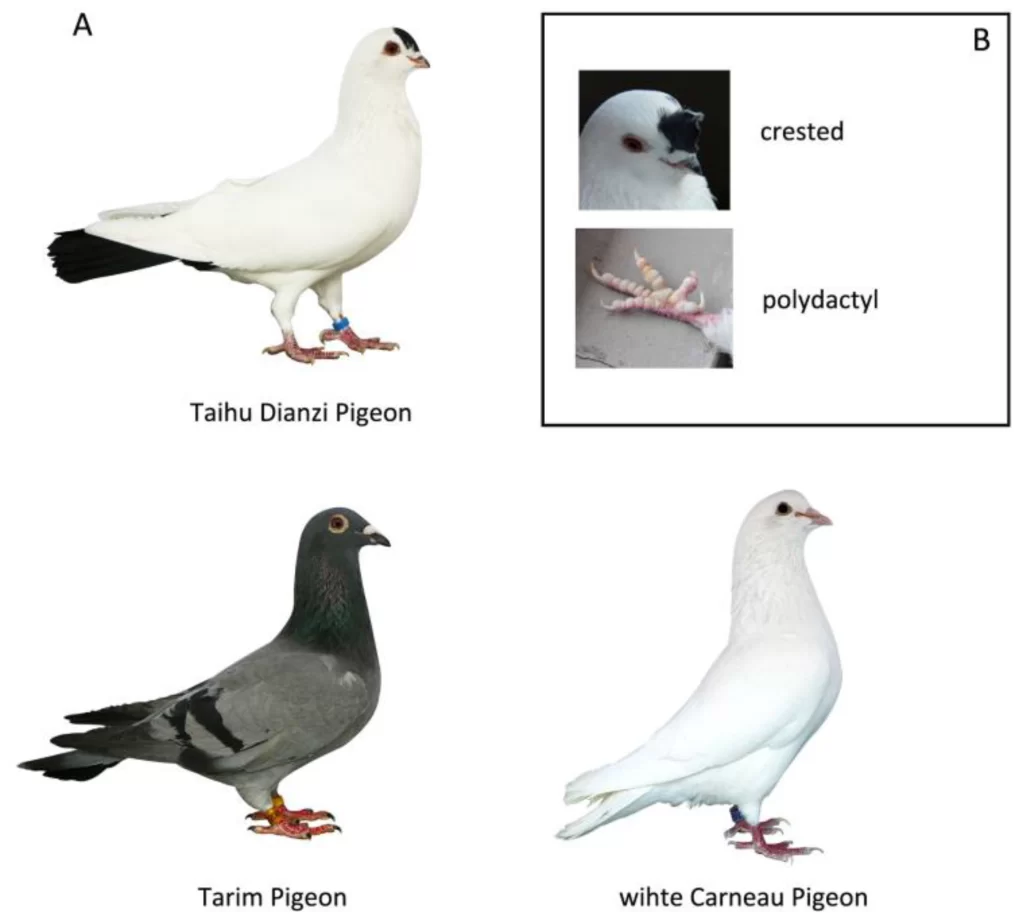The Hypothesis Investigated by Darwin Through Pigeon Breeding
Charles Darwin, the eminent naturalist and biologist, is best known for his groundbreaking work on the theory of evolution through natural selection. One of the key aspects of his research involved studying the breeding of pigeons, which he used as a model to understand the processes of variation and selection in nature. This article delves into the hypothesis Darwin investigated through his studies of pigeons with distinctive traits, the significance of his findings, and the broader implications for the theory of evolution.
Introduction to Darwin’s Work with Pigeons
Darwin’s interest in pigeons began during the late 19th century when he was exploring the concepts of artificial selection and its parallels to natural selection. He recognized that domesticated animals, particularly pigeons, exhibited a wide range of physical traits due to selective breeding by humans. This observation led him to formulate hypotheses about how variation occurs and how it can lead to the development of new species over time.
The Importance of Pigeons in Darwin’s Research
Pigeons were an ideal subject for Darwin’s studies for several reasons:
- Diversity of Breeds: There are numerous breeds of pigeons, each exhibiting distinct physical characteristics, such as size, color, and feather patterns. This diversity allowed Darwin to observe the effects of selective breeding.
- Ease of Breeding: Pigeons breed readily in captivity, enabling Darwin to conduct experiments and observe changes across generations.
- Historical Breeding Records: Pigeon fanciers had kept detailed records of breeding practices, which provided Darwin with valuable data on how specific traits were selected over time.
The Hypothesis: Artificial Selection and Its Relation to Natural Selection
Darwin’s primary hypothesis centered around the idea that if humans could produce significant variation in domesticated animals through artificial selection, then nature, acting over much longer timescales, could produce similar variations through natural selection. This hypothesis was crucial in developing his theory of evolution.
Key Elements of the Hypothesis
- Variation Exists in Populations: Darwin observed that within any breed of pigeon, there was a considerable amount of variation in traits. This variation is essential for selection to occur.
- Selection Pressure: Just as breeders select for desirable traits in pigeons, nature exerts selection pressures that favor certain traits over others in wild populations.
- Common Ancestry: Darwin hypothesized that all domesticated pigeons descended from a common ancestor, the wild rock pigeon (Columba livia). This idea supported the concept of descent with modification, where species evolve over time from common ancestors.
- Inheritance of Traits: Through his studies, Darwin noted that many traits in pigeons were heritable, meaning they could be passed down from parents to offspring. This finding was fundamental to his understanding of how traits could be selected over generations.
Darwin’s Observations and Experiments
Darwin conducted extensive observations and experiments with pigeons, which he documented meticulously. His work involved breeding different types of pigeons and analyzing the resulting offspring.
Breeding Experiments
Darwin bred various types of pigeons, including:
- Fancy Pigeons: These pigeons were bred for specific traits, such as feather color and shape.
- Racing Homers: Known for their speed and homing abilities, these pigeons were also part of Darwin’s studies.
Through these breeding experiments, Darwin was able to observe how specific traits were enhanced or diminished over generations.
Analysis of Traits
Darwin meticulously measured and recorded the physical characteristics of the pigeons, including:
- Color Patterns: He observed the inheritance of color traits and how they varied among different breeds.
- Body Size and Shape: Darwin noted the differences in size and shape among various pigeon breeds, linking these traits to selective breeding practices.
Conclusion from Observations
Darwin concluded that the extensive variation observed in domesticated pigeons was a direct result of artificial selection. He argued that if humans could produce such diversity in a relatively short time, then natural processes could similarly lead to the emergence of new species over much longer periods.
The Impact of Darwin’s Hypothesis
Darwin’s work with pigeons had profound implications for the field of biology and the understanding of evolution. His hypothesis laid the groundwork for several key concepts:
1. Natural Selection
Darwin’s observations of artificial selection in pigeons provided a framework for understanding natural selection. He proposed that in nature, individuals with advantageous traits are more likely to survive and reproduce, passing those traits on to the next generation.
2. Evolutionary Theory
The idea that species evolve over time through a process of selection and variation became a cornerstone of modern evolutionary biology. Darwin’s work with pigeons illustrated how variation within species could lead to the development of new species.
3. Common Descent
Darwin’s hypothesis supported the concept of common descent, suggesting that all living organisms share a common ancestor. This idea has become fundamental to the study of evolutionary biology.
Broader Implications of Darwin’s Work
Darwin’s studies of pigeons extended beyond the immediate findings related to artificial selection. His work had several broader implications:
1. Understanding Speciation
Darwin’s research helped elucidate the mechanisms of speciation, the process by which new species arise. By demonstrating how selective pressures can lead to significant changes in traits, he provided insight into how populations can diverge over time.
2. Influence on Genetics
While Darwin did not have a complete understanding of genetics, his work laid the foundation for later discoveries in the field. The principles of heredity and variation that he observed in pigeons would eventually be explained through the science of genetics.
3. Conservation and Biodiversity
Darwin’s emphasis on the importance of variation and adaptation has implications for conservation efforts today. Understanding how species adapt to their environments is crucial for preserving biodiversity in the face of climate change and habitat loss.
Conclusion
Charles Darwin’s investigation of pigeon breeding was a pivotal aspect of his research that contributed significantly to the development of his theories on evolution and natural selection. By studying the artificial selection of pigeons, he was able to draw parallels to natural processes, ultimately shaping our understanding of how species evolve over time. His work continues to influence the fields of biology, genetics, and conservation today.
Frequently Asked Questions (FAQs)
1. What hypothesis did Darwin investigate through pigeon breeding?
Darwin investigated the hypothesis that artificial selection in domesticated animals, such as pigeons, could illustrate the processes of natural selection in nature.
2. Why did Darwin choose pigeons for his studies?
Pigeons were chosen because of their extensive variety, ease of breeding in captivity, and the detailed records kept by pigeon fanciers.
3. What did Darwin conclude about the variation in pigeons?
Darwin concluded that the variation observed in pigeons was a result of artificial selection, which could be analogous to natural selection in the wild.
4. How did Darwin’s work with pigeons influence his theory of evolution?
His observations of selective breeding in pigeons provided a framework for understanding how natural selection could lead to the evolution of new species over time.
5. What is artificial selection?
Artificial selection is the process by which humans breed animals or plants for specific traits, leading to changes in those traits over generations.
6. Did Darwin believe all pigeon breeds shared a common ancestor?
Yes, Darwin believed that all domesticated pigeons descended from a common ancestor, the wild rock pigeon (Columba livia).
7. How did Darwin’s work impact the field of genetics?
While Darwin did not understand genetics as we do today, his work laid the foundation for later discoveries about heredity and variation.
8. What are the broader implications of Darwin’s research on pigeons?
Darwin’s research has implications for understanding speciation, conservation, and the importance of biodiversity.
9. How did Darwin’s observations challenge contemporary views on species variation?
Darwin’s work demonstrated that significant variation exists within species, challenging the belief that species were fixed and unchanging.
10. What role did pigeon fanciers play in Darwin’s research?
Pigeon fanciers provided Darwin with valuable information, breeding techniques, and access to a variety of pigeon breeds for his studies.
Table: Key Points of Darwin’s Pigeon Studies
| Aspect | Details |
|---|---|
| Hypothesis | Artificial selection in pigeons illustrates natural selection processes in nature. |
| Species Studied | Domestic pigeons, particularly the rock pigeon (Columba livia). |
| Key Findings | Variation exists within breeds; selective breeding leads to significant changes over generations. |
| Implications | Supported the theory of evolution, common descent, and the mechanisms of speciation. |
| Influence on Genetics | Laid the groundwork for understanding heredity and variation in later genetic research. |
For more information on Darwin’s work and the principles of evolution, you can visit the Wikipedia page on Charles Darwin. This article provides a comprehensive overview of the hypothesis Darwin investigated through his studies of pigeon breeding.



